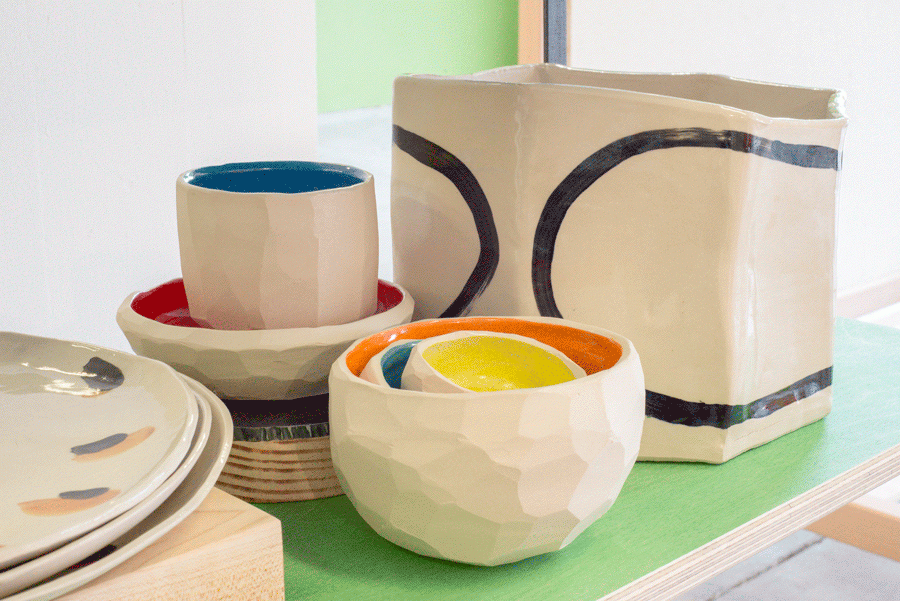Katie Schwab’s work is a quiet call to arms. In its nonetheless insistent way, it embodies a proposition for how contemporary art might revive creative practices of the past. It’s a modest proposal, for sure: Schwab’s work is discreet to a fault, whispering its politics, often finding its forms in the domestic and the decorative, but with an emphasis on the shared physical space of creative labour.
What unifies Schwab’s diverse methods – including tapestry, ceramics, embroidery, furniture, printmaking, video and more – is a sustained investigation into collective manufacture. Built on extensive research and the learning of traditional craft techniques, her work revives the historical craft and design workshop as a sort of applied anthropology. Schwab’s ceramic and tapestry works elude historical framing, resembling at once modernist patterning, pre-Columbian Aztec carving and 1980s graphic design. Their pleasures, at first, are in this teasing historicity, the stylistic switchbacks that continually evade resolution. For her show Together in a Room (at Collective Gallery, Edinburgh, in 2016) – whose title reflects Schwab’s emphasis on shared interior space as the epitome of a creative ideal – the artist made a large embroidery piece entitled Sampler (2016). Mounted and framed on the wall, the work read at first as an abstract painting, although composed of a dispersed range of stitch patterns drawn from a manual of modernist designs. The slow act of making is presented as a kind of attention. Schwab’s work illuminates an alternative history (and future) of art, one in which the creative act is collective, conversational, handmade and a form of education in itself. Making works designed for domestic use (like her plates for the Hotel Ufer, in Düsseldorf) is her way of extending the life of an object through socialisation. These are ideas embedded in design history, and their revitalisation in the art context feels like a corrective.
Schwab’s work illuminates an alternative history of art, one in which the creative act is collective, conversational, handmade and a form of education in itself
I don’t know if she’d agree, but I see Schwab’s work in gallery education as of a piece with her practice as an artist, and the key to understanding her work’s political purpose. Extending and testing the ideas in her work through practical workshops for Tate, the Serpentine and others is a means of letting air into her ideas, enabling a mutual exchange that is very like the kind of educational institutions she reveres: the Bauhaus and Black Mountain College, of course, but also tapestry studios such as West Dean College, West Sussex, and the Dovecot Studios in Edinburgh. There’s something about the embodied duration of a handcrafted object, the implication of time shared, that triangulates student, teacher and maker. For Schwab, it’s all the same thing.
Schwab is based in Glasgow. Her work has recently been shown at Jerwood Space, London, and Glasgow Sculpture Studios.
From the January & February 2017 issue of ArtReview, in association with K11 Art Foundation
